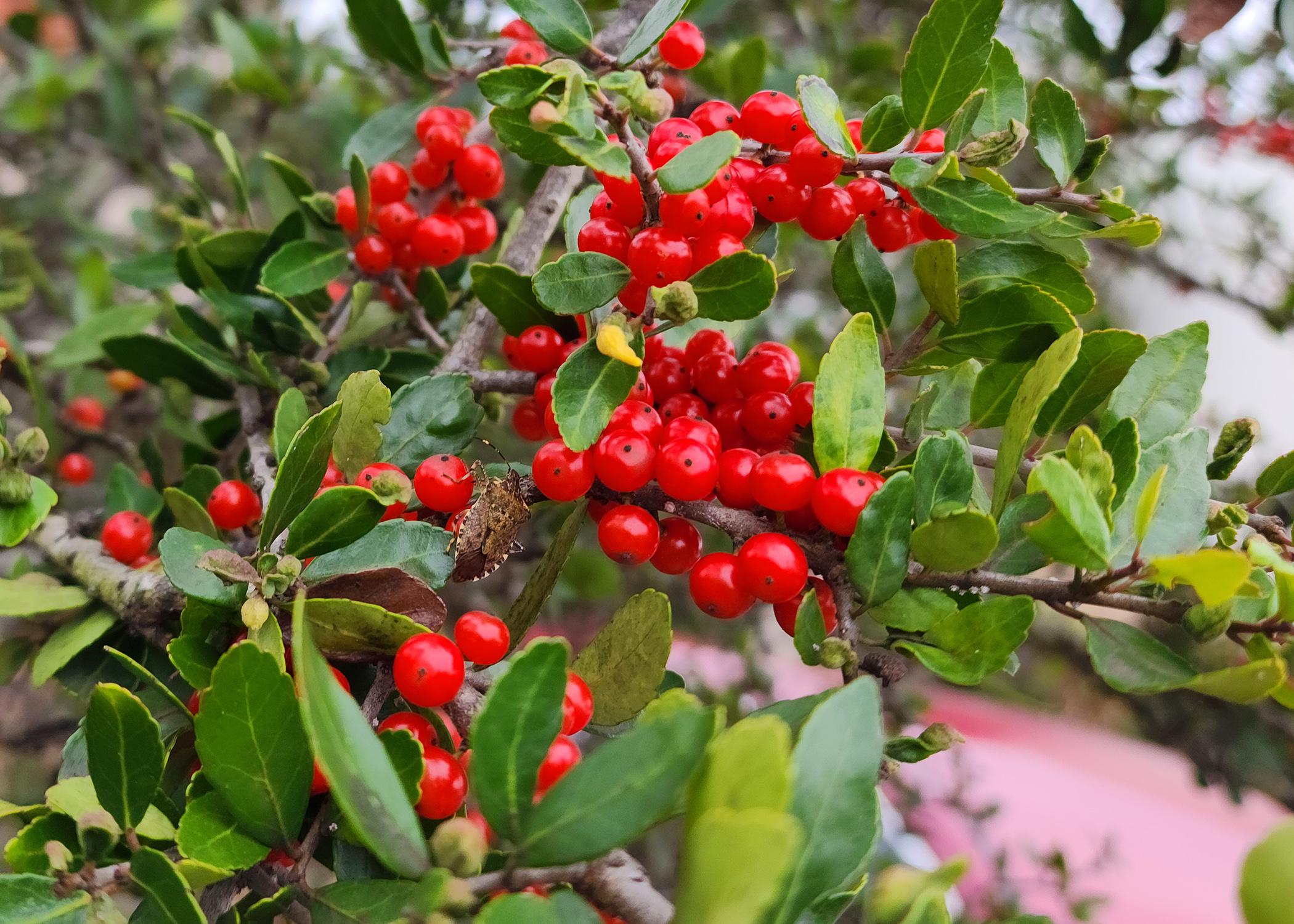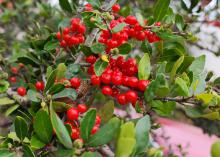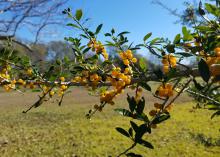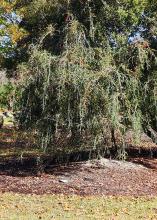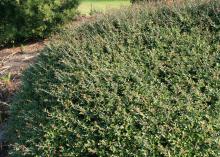Information Possibly Outdated
The information presented on this page was originally released on December 12, 2022. It may not be outdated, but please search our site for more current information. If you plan to quote or reference this information in a publication, please check with the Extension specialist or author before proceeding.
Yaupon hollies bring color to winter gardens
One of the most common questions I get his time of year concerns how to have landscape color from plants that are not annuals, like pansies, violas and dianthuses.
A couple of weeks ago, I mentioned one such plant -- winter cassia -- that adds winter color to landscapes. Now, I want to suggest a Southeastern native shrub that is attractive and has a surprise use.
Yaupon holly is known botanically as Ilex vomitoria. In the late fall and early winter, the colorful berries of this shrub/small tree seem to pop out along the edges of wild, wooded areas along roads and highways around Mississippi.
Like all hollies, yaupon holly has male and female plants. It is the female plants that display the distinctive berries that are different from the other red-berried shrubs. These berries are bright, shiny, candy-apply red. I love their translucent appearance that makes them resemble red pearls.
But not all yaupon holly plants produce red berries.
In the Stone County, Mississippi, area, the genetics exist in the wild for rare, yellow-berried yaupon plants. I found one of these plants in a natural area, and I’m trying to root a couple of cuttings so I can have one in my home landscape.
Yaupon holly typically grows into a small tree that’s up to about 20 feet tall if left alone. Many of the shrubbery-sized yaupon hollies we see along roadways have been cut back during brush clearing maintenance activities. So, a straight native selection might be a little too big if you don’t want to do a little pruning.
But there is good news with a couple of other selections.
There is a really attractive, weeping selection that grows to about 12 feet tall and has branches that arch with a downward growth habit. It is adorned with the pearl-like red berries.
Another is a dwarf selection that could be great for a more traditional foundational planting. Now, with all landscape plants, the term dwarf is relative. Schillings Dwarf grows slowly but will get up to 5 feet tall. A surprising yapon fact is that this selection is sterile and does not produce any of the beautiful berries.
There is much curiosity about drinking yaupon holly tea, and artisan producers offer different varieties and flavors of this drink. The tea is made from the naturally caffeinated leaves of yaupon holly, which is the only naturally caffeinated plant species that grows in most of North America.
For thousands of years, indigenous people in the Southeast drank an infusion of Yaupon leaves and water for energy, as well as medicinal and ceremonial uses. Now, back to its botanical name: It is rumored that during purification rituals, the tea would induce vomiting.
Yaupon holly is a great plant and perfect for our winter landscape, as the berries turn bright red exactly at the right time of year. Try making wreaths and garlands with yaupon holly branches to decorate with this holiday season.

